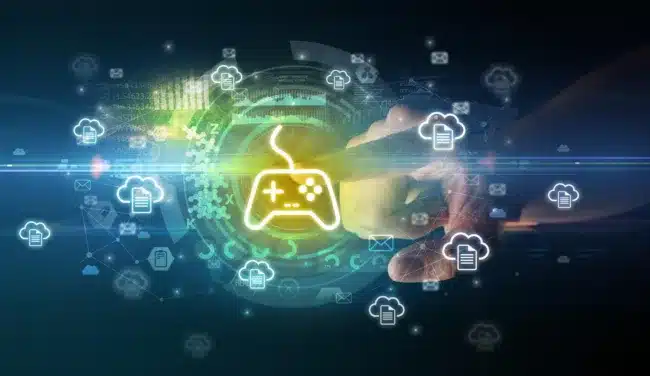Gaming has progressed far away from just cartridges and mob fights on the console. Now, it’s not just about merely beating levels or unlocking achievements; it’s about ownership, community, and maybe even generating money while you play. That’s where Web3 gaming comes into the picture.
If you’ve ever wondered about the concept of web3 gaming platforms as opposed to the old-school configurations that we’ve all been accustomed to for years, you’ve come to the right place. Let’s break it down and demonstrate just why exactly Web3 is changing the game.
The Shift from Traditional Gaming to Web3
For years, the gaming industry has operated on a relatively simple model- you pay to buy the game, you play it, and the publisher retains all the power. But with the development of blockchain technology, that’s rapidly changing.
Web3 gaming flips the script. Instead of being just a player, you are an owner, trader, and even a decision-maker. Imagine your gaming world not being bound to a company’s servers but actually living in a blockchain world where you are in control of your items and your progress. That’s the shift that we’re talking about.
By the end of 2024, blockchain gaming achieved 7.4 million daily unique active wallets (dUAW) — that’s a 421% increase from the start of the year. This rapid growth highlights the urgency with which players are adopting the transition from traditional gaming to Web3 gaming.
The Traditional Gaming Model and Its Drawbacks
Centralization and Limited Control
In traditional gaming, you don’t really “own” anything that you’re purchasing, whether it’s weapons or upgrades. You’re essentially renting those items from the publisher. Are your hours and dollars well spent when a game’s servers go down or the publisher goes under? Gone. You’re essentially renting digital stuff and not truly owning it.
Restricted Monetization and Locked In-Game Assets
Sure, you may grind for rare items or spend your cash on upgrades, but you cannot really trade or resell them freely. Traditional games keep the assets of the games locked to their ecosystem. That means you couldn’t profit from your time or skills outside of the game.
One-Way Engagement Without Community Governance
Most games don’t give you a voice. The rules, updates, and directions are all up to the developers. Players are just along for the ride, even if it’s their contribution in making the game last longer.
How Web3 Gaming Platforms Change the Game
True Digital Ownership Through NFTs and Blockchain
Here’s the big deal: in the Web3 games, your items, characters, and land can actually be yours. Due to the NFT and blockchain, your assets are recorded permanently and safely. You can sell or trade them, or keep them like physical collectibles.
Play-to-Earn Economies Rewarding Players Directly
Web3 doesn’t just mean fun; it also means opportunity. Play-to-Earn models translate to ways to make money by participating. Whether it’s battling monsters, constructing worlds, or staking tokens, your effort is valuable.
Transparent, Decentralized Gameplay With Smart Contracts
Smart contracts manage the execution of the rules, not corporations. That means no shady business or out-of-the-blue rule changes without community input. Decisions are open, and players have the power to even vote about the future of the game.
For a developer’s perspective on this transformation, check out this exclusive interview with Sebastien Guillemot exploring Web3 gaming, which offers valuable insights into how industry leaders see the future.
Top Web3 Gaming Platforms Reshaping the Industry

Now that you get the “why,” let’s talk about the “who”. Here are some of the top Web3 gaming platforms gaining popularity in recent times:
- Axie Infinity: One of the OGs of web3 gaming. You collect, battle, and breed Axies (NFT creatures). It developed one of the first Play-to-Earn economies, which demonstrated how powerful the economy of player-driven markets can be.
- Decentraland: Think of it as a virtual world where you can own land, create your own experiences, and even host your own events. It’s like taking real estate and social networking and creating a digital version of it.
- The Sandbox: A community-based platform where you can create, own, and monetize gaming experiences. From building assets to hosting virtual concerts, the creation is in your hands at The Sandbox.
- Illuvium: If you’re all about high-quality graphics and immersing yourself in the game experience, Illuvium is at the forefront. It’s an open-world RPG game in which you can collect NFT creatures called Illuvials and trade them for real value.
- Planet IX: This game makes Earth a digital playground. You can buy, trade, and build virtual pieces of land anywhere in the world. It’s a combination of strategy, sustainability, and ownership.
To understand how infrastructure is scaling alongside these games, read about Polemos launching its PLMS token to boost Web3 gaming infrastructure– a key example of how ecosystems grow stronger with proper support.
Final Thoughts
So here’s the takeaway: traditional gaming provides us with memories, excitement, and epic battles, but what Web3 gaming is adding is something new: ownership, freedom, and even money. Instead of a mere player, you become one with the ecosystem.
As blockchain continues to grow, web3 gaming platforms are only going to get bigger, smarter, and more rewarding. If you are curious, this is the perfect time to jump in and explore the worlds that are being created.
Stay tuned to 36Crypto for the latest insights, guides, and updates to keep you ahead in this fast-moving space. The future for gaming is here; are you ready to play it your way?

